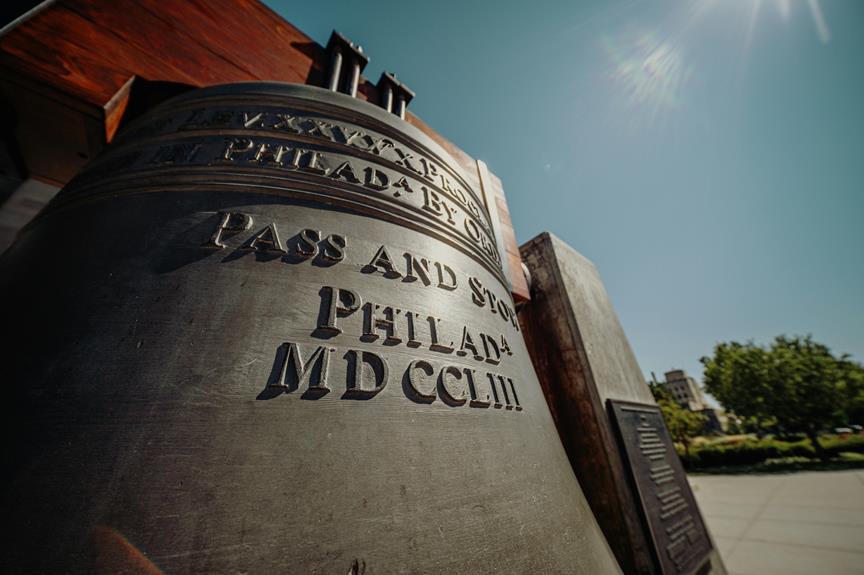The Hiroshima Peace Memorial in Japan stands as a solemn affirmation to a pivotal moment in history that forever altered the course of warfare and human existence. Its haunting presence prompts contemplation on the fragility of peace and the enduring impact of nuclear weapons. The memorial's architecture and exhibits serve as poignant reminders of the horrors of war, compelling visitors to confront uncomfortable truths and consider the implications for the future. As a beacon of remembrance and reflection, the Hiroshima Peace Memorial invites introspection and dialogue on the pursuit of lasting peace in a world still grappling with the specter of nuclear conflict.
Key Takeaways
- Symbol of resilience and healing after atomic bombing in 1945.
- UNESCO World Heritage Site with cultural and historical significance.
- Emphasizes peace, reconciliation, and global cooperation.
- Architectural design with symbolic elements for reflection.
- Remembrance of victims and advocate for nuclear disarmament.
History and Significance
What historical events led to the establishment of the Hiroshima Peace Memorial, and what is its significance in the context of global peace efforts?
The Hiroshima Peace Memorial, also known as the Genbaku Dome, stands as a poignant reminder of the tragic events that unfolded on August 6, 1945, when the United States dropped an atomic bomb on the city of Hiroshima during World War II. This devastating attack resulted in unparalleled destruction, causing immense loss of life and leaving a lasting impact on the city and its inhabitants.
The decision to preserve the Genbaku Dome, the only building left standing near the bomb's hypocenter, was a significant step towards remembrance and reconciliation. The memorial serves as a symbol of cultural significance, representing both the horrors of war and the resilience of the human spirit. Its designation as a UNESCO World Heritage Site underscores its universal importance in promoting peace and understanding.
The emotional impact of visiting the Hiroshima Peace Memorial is profound, evoking feelings of sorrow, reflection, and hope for a peaceful future. Through its stark presence amidst the modern cityscape, the memorial prompts visitors to contemplate the devastating consequences of armed conflict and the urgent need for global cooperation to prevent such tragedies from recurring. Essentially, the Hiroshima Peace Memorial stands as a beacon of remembrance, reconciliation, and a powerful advocate for peace in a world marred by violence and conflict.
Architectural Design and Features
The architectural design of the Hiroshima Peace Memorial, characterized by its stark simplicity and symbolic elements, embodies a profound message of remembrance and resilience. As a symbolic structure, the memorial stands as a poignant reminder of the devastating impact of the atomic bomb and the importance of working towards peace. The design inspiration for the Hiroshima Peace Memorial can be traced back to the traditional Japanese Shinto pagoda, evident in its tall, slender form and the use of exposed concrete that mimics the wooden construction of pagodas.
Structural elements such as the central dome, designed to evoke the image of praying hands, and the arched roof symbolizing shelter and protection, contribute to the memorial's deep memorial symbolism. The exposed steel framework visible in parts of the structure serves as a representation of strength and resilience in the face of tragedy. The careful positioning of windows and openings allows natural light to filter into the memorial, creating a sense of serenity and hope amidst the solemn atmosphere.
The design of the Hiroshima Peace Memorial is a demonstration of the power of architecture to convey profound emotions and messages. It stands as a timeless tribute to the victims of the atomic bombing and a call for peace and understanding among nations.
Exhibits and Displays
Numerous exhibits and displays within the Hiroshima Peace Memorial provide visitors with a poignant and informative insight into the history and impact of the atomic bombing. The museum offers a range of interactive learning experiences that evoke a deep emotional impact, allowing visitors to engage with the tragic events that unfolded in Hiroshima on that fateful day.
- Hiroshima Archive: The archive houses a collection of personal belongings, photographs, and documents belonging to victims of the atomic bombing. These items offer a glimpse into the lives of those affected and serve as a stark reminder of the human cost of war.
- Survivor Testimonies: Visitors have the opportunity to listen to firsthand accounts from survivors of the bombing. These testimonies provide a powerful narrative of the devastation caused by the atomic bomb, offering a personal perspective on the tragedy.
- Interactive Exhibits: The museum features interactive displays that allow visitors to explore the events leading up to the bombing, the aftermath, and the efforts towards peace. By engaging with these exhibits, visitors can gain a deeper understanding of the historical context and the enduring impact of nuclear warfare.
Peace Park Surroundings
Surrounding the Hiroshima Peace Memorial, the Peace Park offers a serene and contemplative space that commemorates the victims of the atomic bombing and symbolizes the enduring pursuit of peace. The park landscaping is meticulously designed to evoke a sense of tranquility and reflection. Lush greenery, winding paths, and peaceful water features create a harmonious environment for visitors to contemplate the tragedies of war and the importance of peace.
Among the park's prominent features are the memorial monuments that stand as powerful symbols of remembrance and hope. The Memorial Cenotaph, designed by Kenzo Tange, arches over the Peace Flame and frames the Peace Memorial at the park's center. This structure embodies a sheltering arc, representing the souls of the victims and a commitment to never let such a tragedy happen again. Adjacent to the Cenotaph is the Peace Bell, which visitors can ring to spread a message of peace across the world.
The park's landscaping and memorial monuments work in harmony to create a space that honors the past while advocating for a peaceful future. As visitors stroll through the Peace Park surroundings, they are invited to reflect on the devastating consequences of war and the collective responsibility to work towards a world free of nuclear weapons and conflict.
Visitor Information and Tips
Upon arrival at the Hiroshima Peace Memorial, visitors can benefit from essential information and helpful tips to enhance their experience and understanding of this significant historical site.
- Cultural Etiquette: Respect for the site is paramount. Visitors should maintain a solemn and respectful demeanor throughout their visit. It is customary to bow in front of the Memorial Cenotaph or offer a silent prayer as a sign of respect for the victims of the atomic bombing.
- Transportation Options: The Peace Memorial Park is conveniently located and easily accessible by public transportation. Visitors can take a tram to the Genbaku Dome-mae station, which is a short walk from the memorial. Alternatively, taxis are readily available for those preferring a more direct route.
- Guided Tours: To gain deeper insights into the history and significance of the Hiroshima Peace Memorial, guided tours are available in multiple languages. These tours offer a detailed overview of the site, its history, and the events surrounding the atomic bombing, providing visitors with a more profound understanding of the impact of this tragic event on global peace efforts.
Impact on Global Peace Efforts
The Hiroshima Peace Memorial stands as a poignant reminder of the catastrophic consequences of nuclear warfare and serves as a beacon for understanding the profound impact on global peace efforts. The devastation caused by the atomic bomb dropped on Hiroshima in 1945 highlighted the urgent need for nuclear disarmament and paved the way for diplomatic efforts aimed at preventing future conflicts of such magnitude. This tragic event underscored the horrors of war atrocities and emphasized the importance of reconciliation in fostering lasting peace among nations.
The aftermath of the Hiroshima bombing propelled international discussions on nuclear disarmament, leading to the establishment of non-proliferation treaties and agreements designed to reduce the threat of nuclear warfare. The memorial serves as a powerful symbol of the devastating impact of nuclear weapons, urging nations to work together towards complete disarmament to ensure global security and stability. Through diplomatic channels, countries have sought to learn from the past and prevent similar tragedies, emphasizing the necessity of open dialogue and cooperation in addressing conflicts and promoting peace.
Moreover, the Hiroshima Peace Memorial stands as a sign of the resilience of the human spirit and the capacity for healing and reconciliation even in the face of unimaginable suffering. It serves as a reminder of the importance of acknowledging past wrongs, fostering understanding, and embracing forgiveness as essential steps towards building a more peaceful and harmonious world.
Frequently Asked Questions
Can Visitors Light Candles or Incense at the Memorial?
Visitors are typically allowed to light candles and offer incense at memorials as a way to pay their respects and honor the memories of those being commemorated. These acts symbolize remembrance, prayer, and reflection, providing visitors with a tangible way to express their emotions and thoughts.
Lighting candles and offering incense are common practices at many memorials globally, serving as a universal gesture of reverence and commemoration.
Are There Any Guided Tours Available at the Peace Park?
When seeking to explore further into the historical significance of a location, one often looks for guided tours to provide a structured exploration. At the Peace Park, visitors can benefit from various options to enhance their understanding.
These include virtual tours offering a detailed insight from the comfort of one's location. Additionally, individuals can partake in self-guided exploration, allowing for a personalized experience while absorbing the profound symbolism of the site.
Are There Any Restrictions on Photography Inside the Memorial?
Photography restrictions within memorials serve to maintain sanctity and respect for the space. These restrictions often aim to preserve the solemn atmosphere and protect the privacy of visitors engaging in memorial activities.
Understanding and complying with such guidelines demonstrate a dedication to honoring the historical significance of the site and the experiences of those affected. Visitors should familiarize themselves with the specific rules and regulations in place at each memorial to guarantee a meaningful and respectful visit.
Is There a Specific Time When the Memorial Is Less Crowded?
During peak hours, tourist attractions often experience higher footfall, resulting in crowded spaces. Conversely, off-peak hours tend to offer a quieter experience due to fewer visitors.
Understanding the tourist season can help in determining the best times to visit to avoid crowds. By planning visits during off-peak hours, visitors can enjoy a more peaceful and less crowded experience at popular attractions.
Can Visitors Leave Personal Messages or Offerings at the Memorial?
Visitors often seek solace through personal reflections and peaceful gestures at memorials worldwide. Leaving messages or offerings can be a cathartic experience, fostering a sense of connection and remembrance.
This act not only honors the past but also allows individuals to express their emotions and pay tribute in a meaningful way. Understanding the significance of such gestures can enhance the overall experience of visiting a memorial site.
Conclusion
In the shadow of the Hiroshima Peace Memorial, the haunting echoes of history beckon visitors to contemplate the horrors of war and the imperative of peace. As the sun sets over the tranquil park surroundings, the memorial stands as a solemn affirmation to the resilience of humanity in the face of destruction.
Through its stark architectural design and poignant exhibits, it serves as a powerful reminder of the urgent need for global cooperation and dialogue in pursuit of a more peaceful world.


